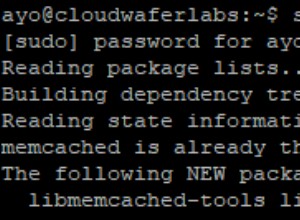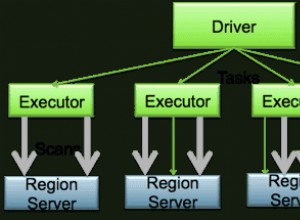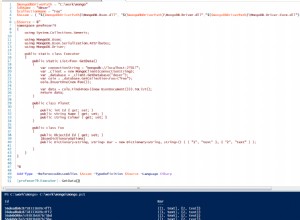AKTUALIZACJA: Począwszy od MongoDB v4.1.11, wreszcie wydaje się, że istnieje dobre rozwiązanie dla twojego problemu, które jest udokumentowane tutaj .
Oryginalna odpowiedź:
Jak napisałem w komentarzach powyżej, $regex nie działa wewnątrz $cond od teraz. Jest otwarty bilet JIRA
za to, ale to jest, eee, cóż, otwarte...
W twoim konkretnym przypadku sugerowałbym rozwiązanie tego tematu po stronie klienta, chyba że masz do czynienia z szaloną ilością danych wejściowych, z których zawsze zwrócisz tylko małe podzbiory. Sądząc po zapytaniu, wygląda na to, że zawsze będziesz pobierać cały dokument podzielony na dwie grupy wyników („Tak” i „Nie”).
Jeśli nie chcesz lub nie możesz rozwiązać tego tematu po stronie klienta, oto coś, co używa $aspekt (MongoDB>=wymagana wersja 3.4) - nie jest ani szczególnie szybki, ani zbyt ładny, ale może ci pomóc w rozpoczęciu pracy.
db.captions.aggregate([{
$facet: { // create two stages that will be processed using the full input data set from the "captions" collection
"CallToActionYes": [{ // the first stage will...
$match: { // only contain documents...
"plainText": /leave\sa\scomment/i // that are allowed by the $regex filter (which could be extended with multiple $or expressions or changed to $in/$nin which accept regular expressions, too)
}
}, {
$addFields: { // for all matching documents...
"CallToAction": "Yes" // we create a new field called "CallsToAction" which will be set to "Yes"
}
}],
"CallToActionNo": [{ // similar as above except we're doing the inverse filter using $not
$match: {
"plainText": { $not: /leave\sa\scomment/i }
}
}, {
$addFields: {
"CallToAction": "No" // and, of course, we set the field to "No"
}
}]
}
}, {
$project: { // we got two arrays of result documents out of the previous stage
"allDocuments" : { $setUnion: [ "$CallToActionYes", "$CallToActionNo" ] } // so let's merge them into a single one called "allDocuments"
}
}, {
$unwind: "$allDocuments" // flatten the "allDocuments" result array
}, {
$replaceRoot: { // restore the original document structure by moving everything inside "allDocuments" up to the top
newRoot: "$allDocuments"
}
}, {
$project: { // include only the two relevant fields in the output (and the _id)
"videoId": 1,
"CallToAction": 1
}
}])
Jak zawsze w przypadku struktury agregacji, pomocne może być usunięcie poszczególnych etapów z końca potoku i uruchomienie zapytania częściowego w celu zrozumienia, co robi każdy z poszczególnych etapów.




